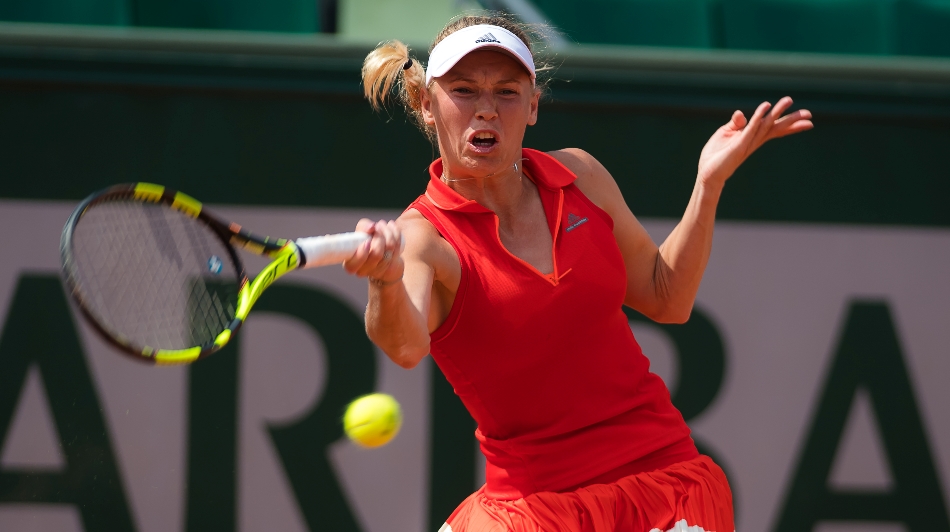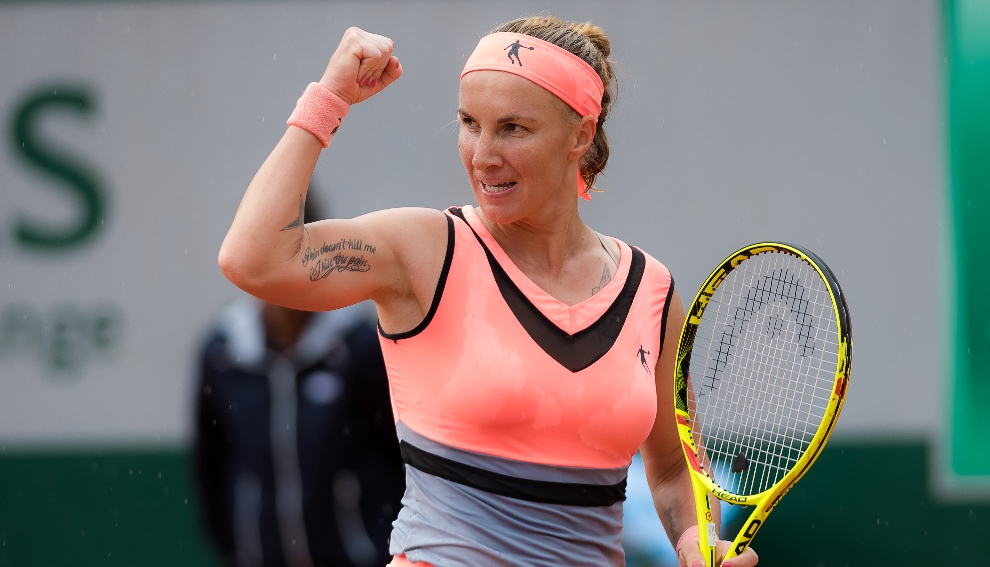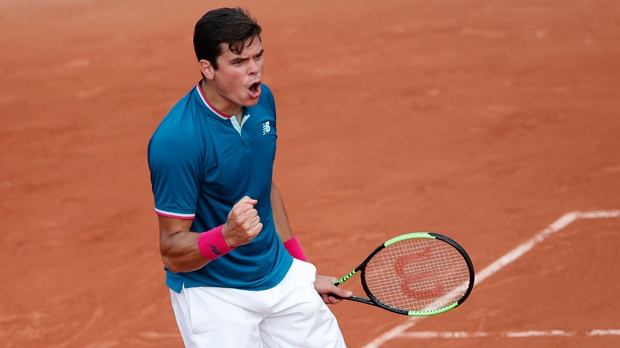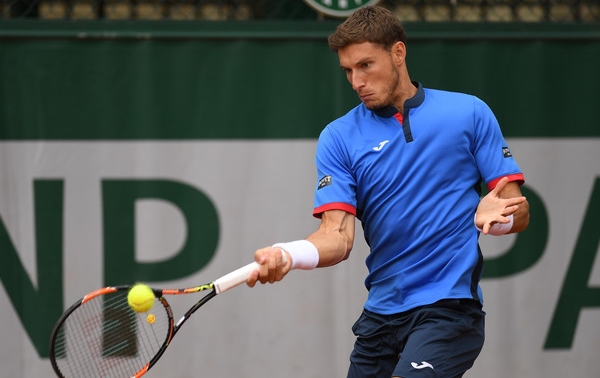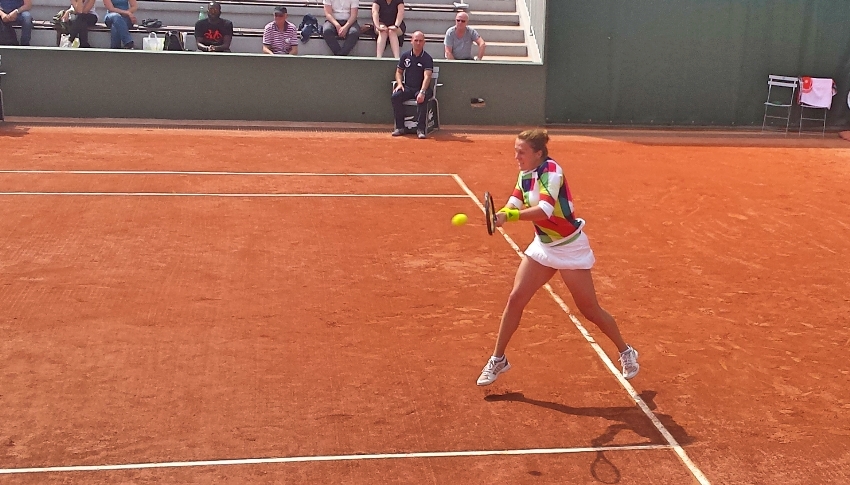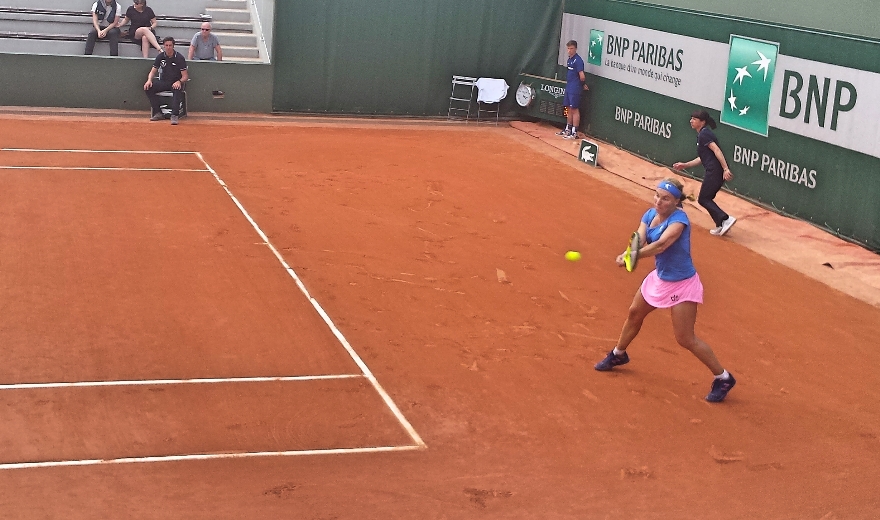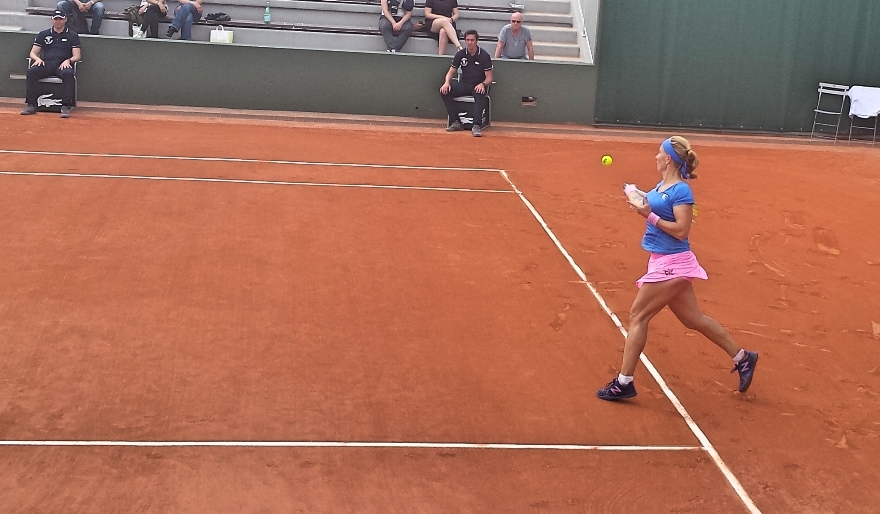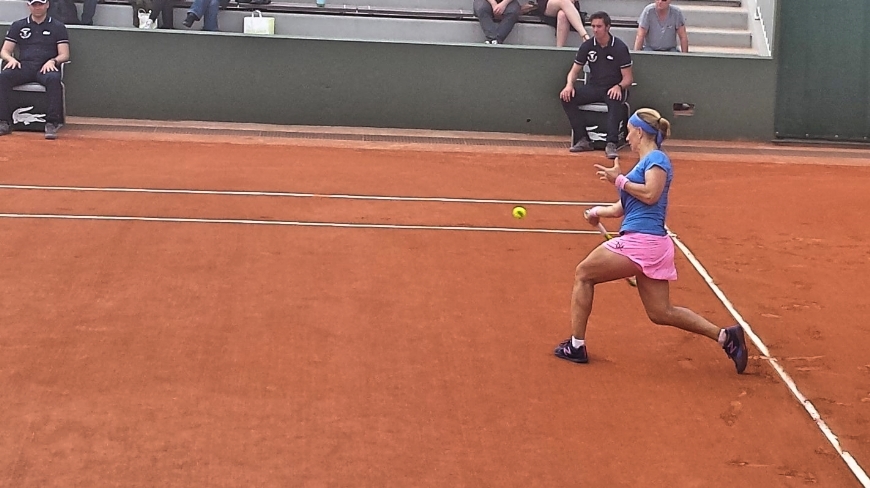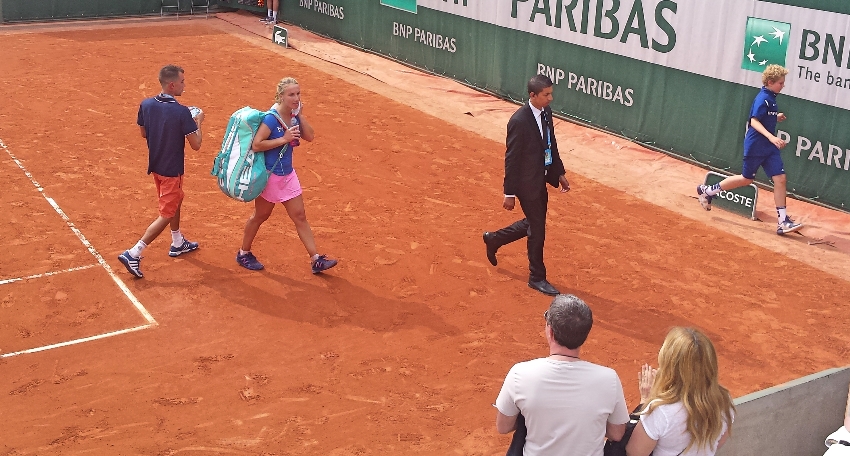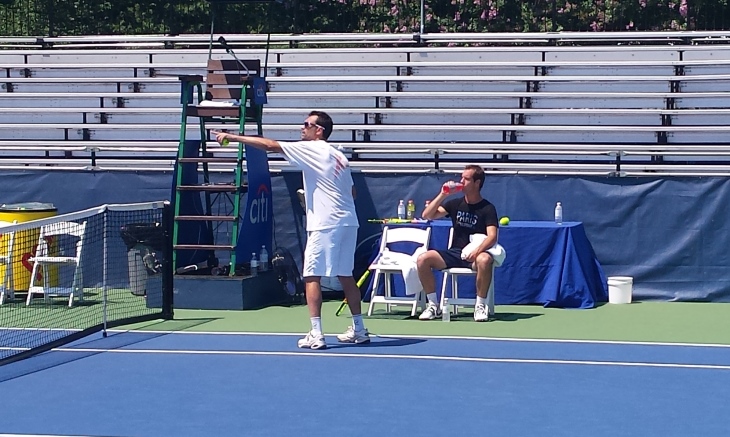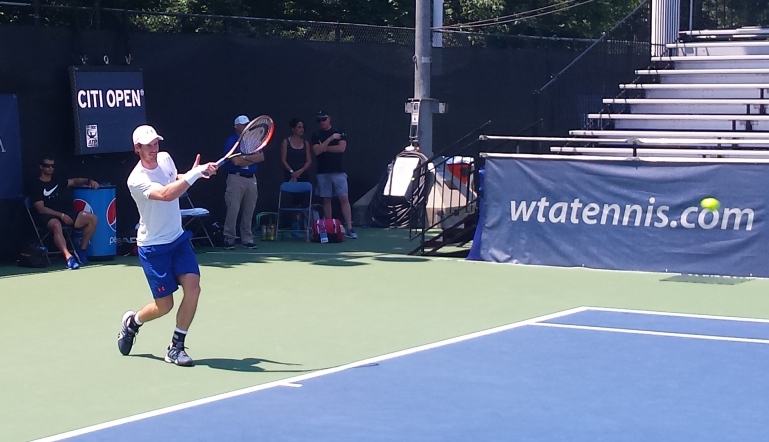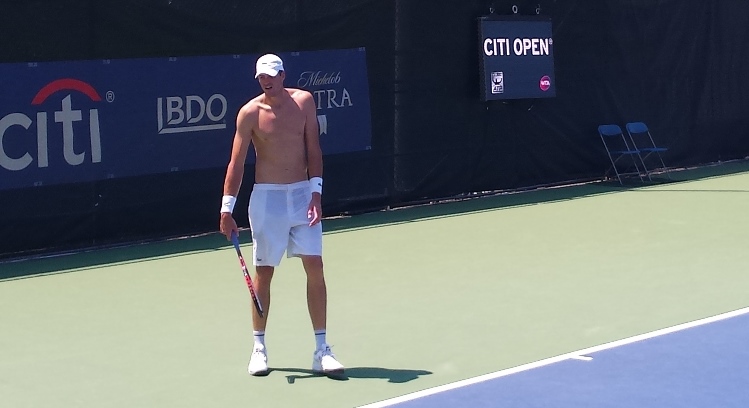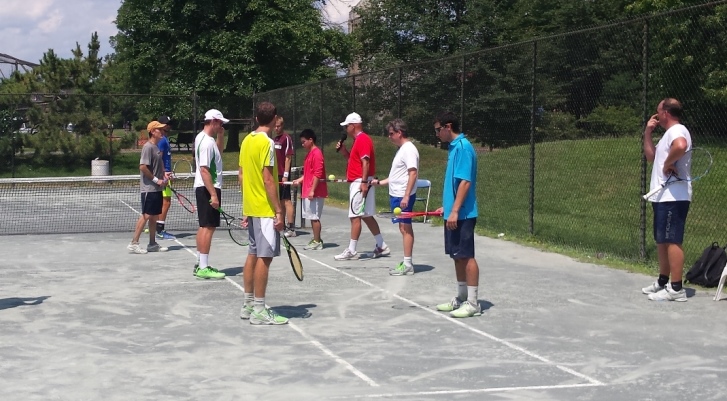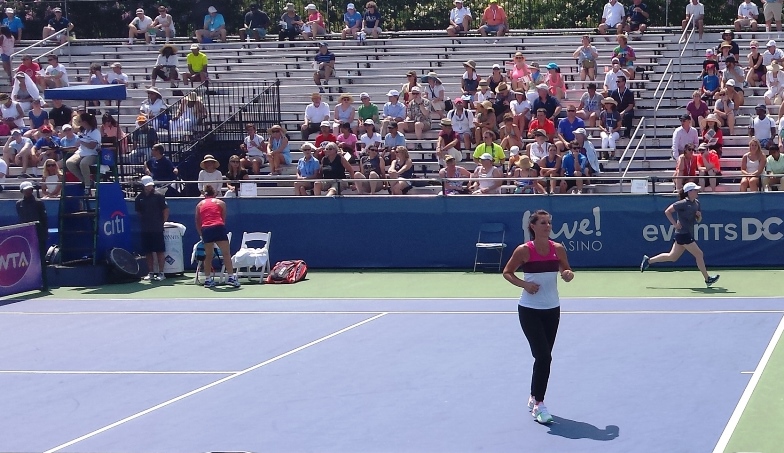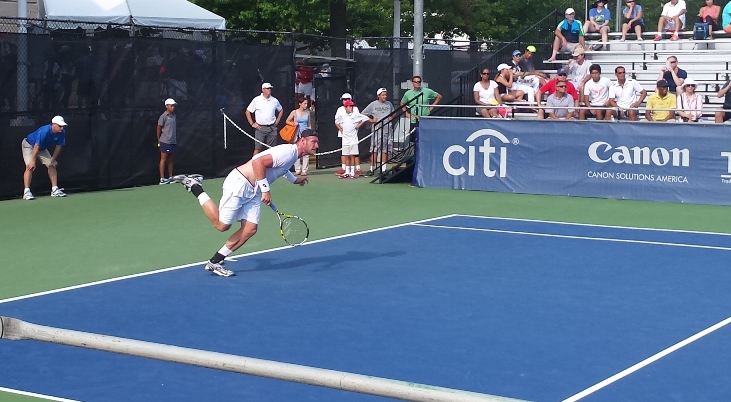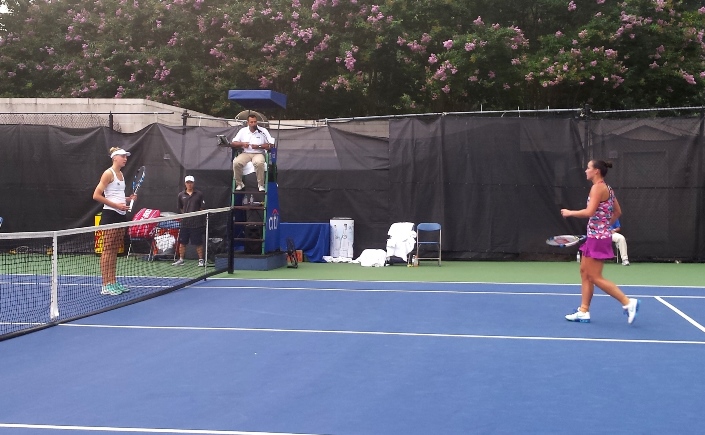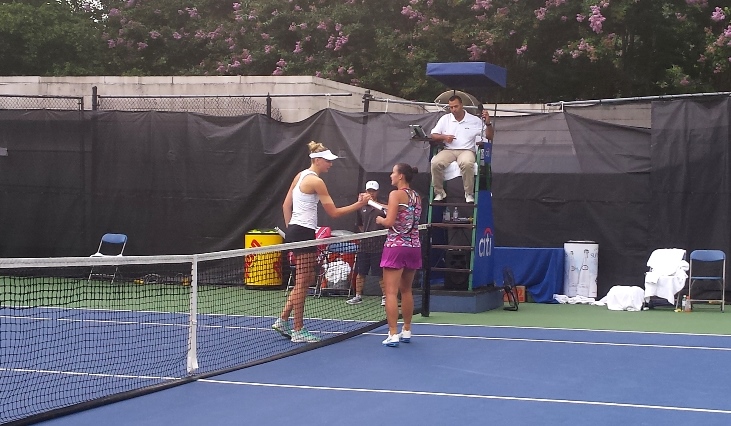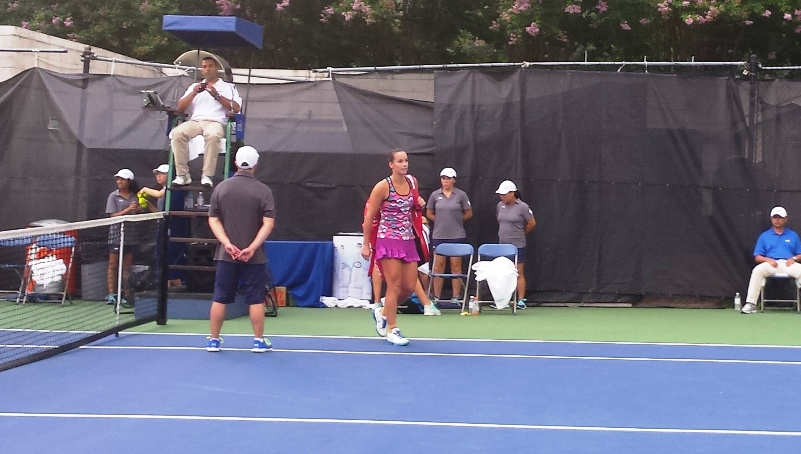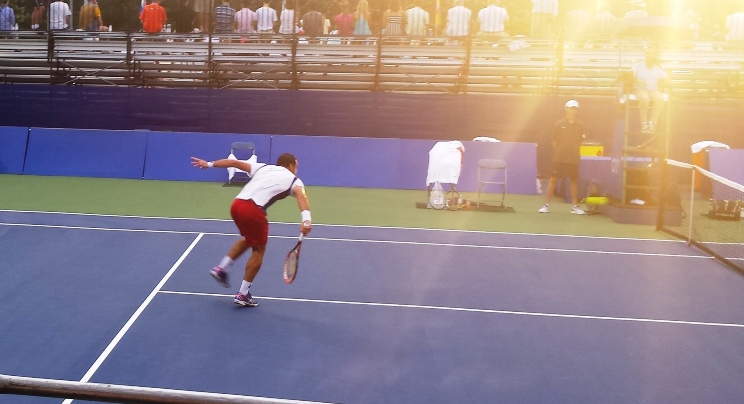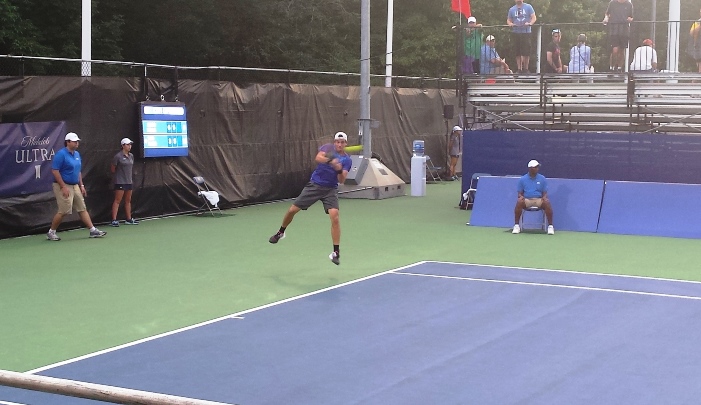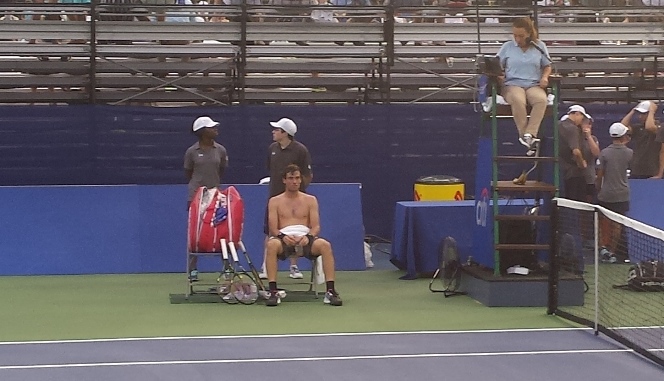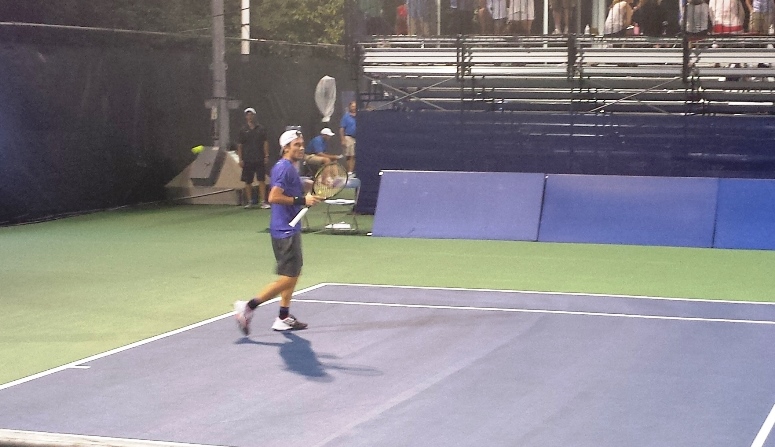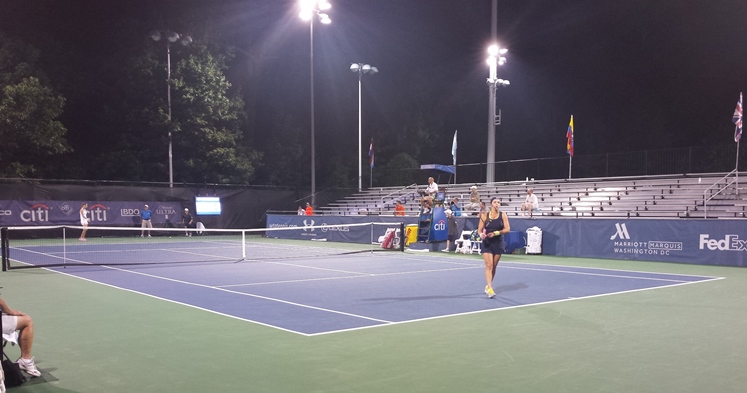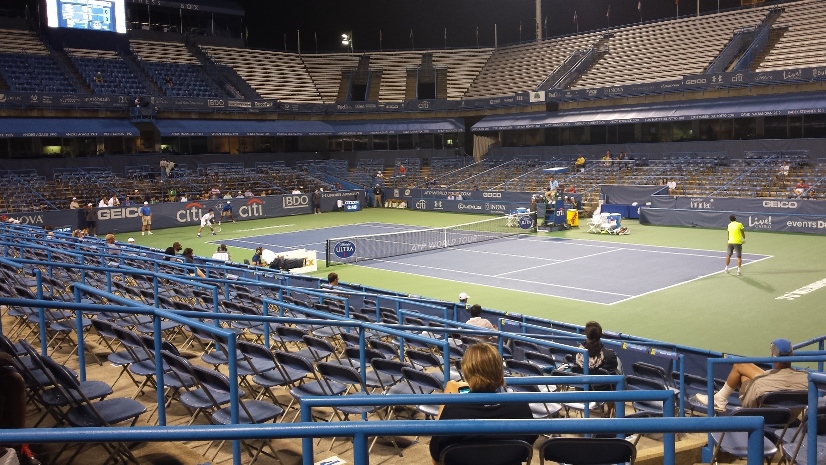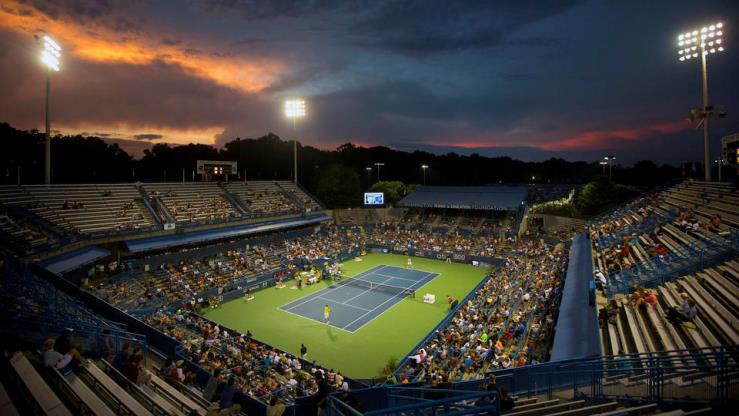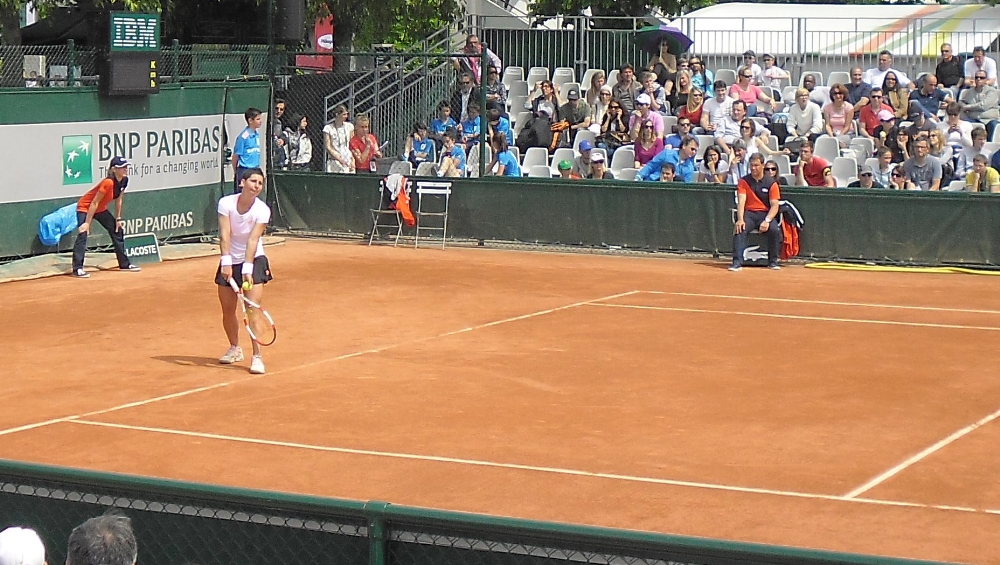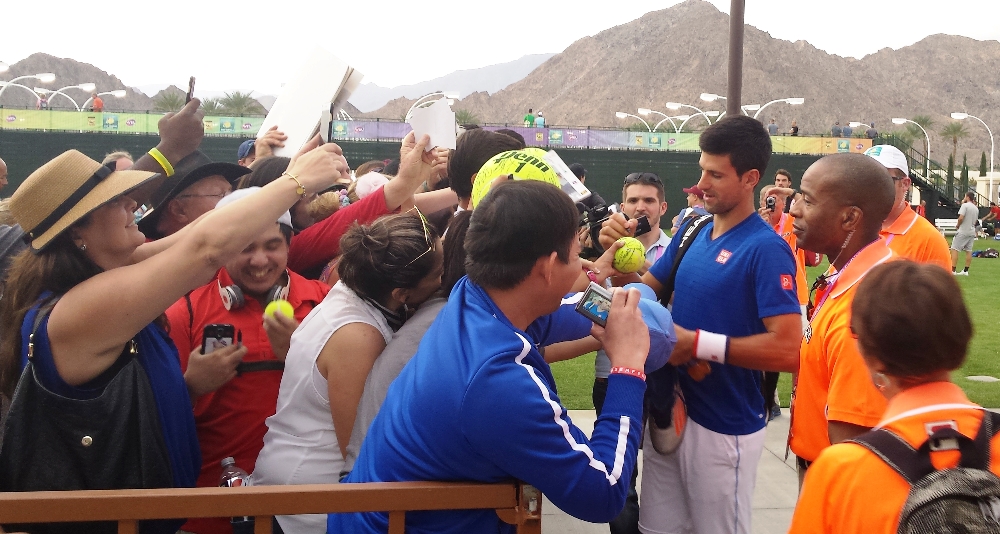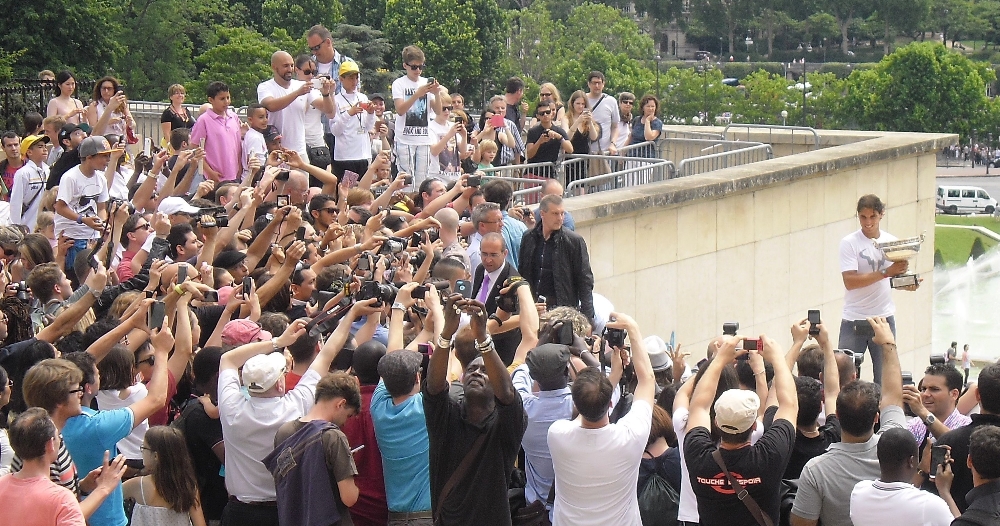Maria Sakkari def. Arantxa Rus 6-3 7-6
This encounter between the 48th-ranked Sakkari and the qualifier Rus turned out to be a straight-forward baseline affair, with little variety produced by either player. Points were largely decided on errors, with the Dutch player committing a few more than her opponent. There were not many points won at the net, or specialty shots like angles and drop shots. While Rus managed to strike several impressive forehands – especially down-the-line – she also sprayed a number of them deep. Interestingly, several of those deep errors came on shots aimed to the middle of the court.
She had a couple of chances to break Sakkari’s serve in the beginning of the match but could not capitalize on them. As happens so often in these cases, the player who just squandered break-point chances, loses her own serve in the very next game. Sakkari carried that early-break advantage all the way to the end of the set, taking it 6-3.
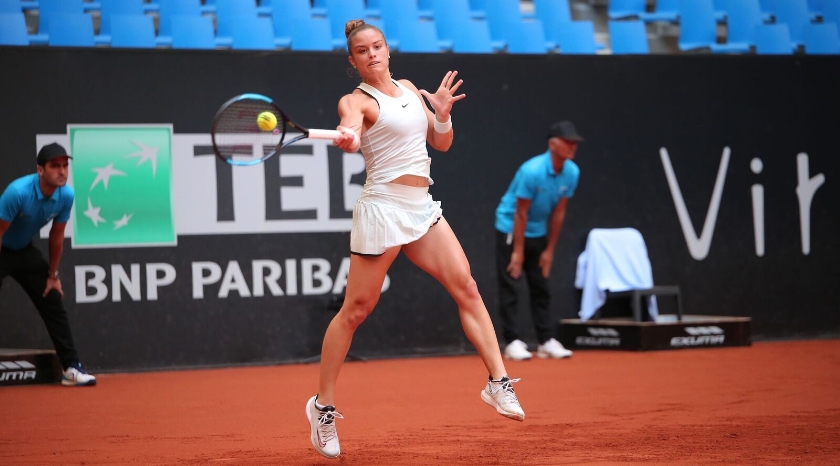
Rus was able to go up a break early twice, thanks to a few forehands missed by Sakkari, but could neither hold at 2-0, nor at 4-2, to confirm those breaks. Nevertheless, she stayed a step ahead throughout the second set. Sakkari, for her part, could not get her first serve going in the second set, registering a dismal 29% midway through. But Rus could not take advantage of her leads enough to force Sakkari to modify her game plan. Sakkari continued to feed her opponent a steady stream of cross-court shots and waited for her errors.
Second set came down to a tiebreaker. Rus did hit a couple of forehand down-the-line winners (by far, her most potent weapon in this match) to get ahead. She went up 6-4 on a double fault by Sakkari, thus earning two chances to send the match to a final set.
However, Rus committed costly errors to lose the next four points and the match. It was a fitting microcosm for how the match went for Rus on important points. On her second set point at 6-5, she had a forehand sitter inside the baseline that she failed to put away, missing the next forehand deep. Then at 6-7, down a match point, she missed a backhand wide. Just like that, the match was over 6-3 7-6 in Sakkari’s favor.
This is the Greek player’s second career semifinal appearance in a WTA Event and she will need to get past Polona Hercog to reach her first final.
Polona Hercog def. Svetlana Kuznetsova 6-1 1-6 7-5
Sometimes there are sets where one player clicks on all cylinders and there is not much that her opponent can do about it, like in the first set of this match. Hercog came out firing winners and managed to make Sveta, one of the best defensive players in the WTA Tour, look helpless on several occasions. She struck 20 winners (to three for Sveta) and only made six unforced errors on the way to pocketing the set 6-1.
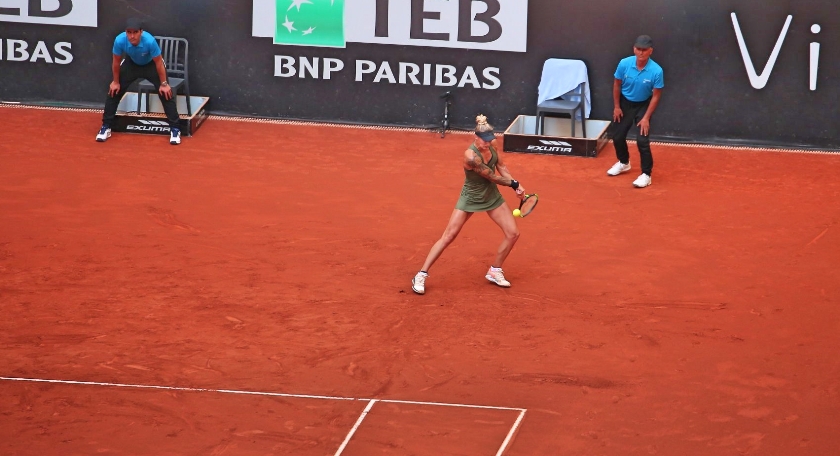
As the second set commenced, there was only one question that mattered. Would Hercog be able to maintain her form? We did not have to wait long for the answer as Hercog began the second set with a series of errors to go down a break. Sveta who, for her part, remained calm and collected, although still not completely free of errors.
The match took a 180-degree turn and Kuznetsova cruised to a 6-1 victory in the second set. The shocking number, even with such a blatant reversal, was Hercog hitting only one winner in the second set, after having recorded twenty of them in the first. Kuznetsova won it without really playing well.
With the first two sets having been decided by the early games, it only made sense that the next ten minutes would play a crucial role in the outcome of the match. Both players knew it because you could sense the tension in their game. At 30-30, Hercog gagged a shoulder-level forehand volley in the net! Sveta returned the favor in the ensuing break point with a forehand mishit that landed deep. She added credit to that favor with another forehand missed wide on her second break-point opportunity. You could tell the relief in Hercog’s body language as she walked to her chair, up 1-0, after Sveta erred on a third forehand on game point.
Both players began to hold their serves as some sense of order seemed to settle in the match. Or so everyone thought.
It all went haywire again after the seventh game. Following an exchange of breaks at 3-3, Hercog played a shockingly bad game on her serve at 4-4. She chucked her racket to the ground in disgust after the last point. Sveta, serving at 5-4, outperformed Hercog yet again by losing four points in a row, three of them on routine errors.
At 5-5, we finally had our first “quality” game of the final set, at least for Hercog. She hit a fine drop-shot winner and followed it with a forehand winner on the next point – from the same spot she misfired on two of them back in the 4-4 game.
That hold to go up 6-5 turned out to be the crucial “break” for Hercog, Sveta simply could not put a stop to the string of unforced errors that she was committing on her service games. Fittingly, in the last two points of the match, she missed a backhand wide and a forehand inside-out wide again before walking up to the net to congratulate her opponent for the win.
Kuznetsova fans are probably concerned, for valid reasons. Ranked 28 in the WTA, Sveta’s form is nowhere near the level needed for a possible run in the French Open. I am not sure if the three matches she got under her belt in Istanbul have helped the cause. Furthermore – and this is a shocker in my opinion – Sveta has not won a title on clay courts since 2009, when she lifted the trophy at Roland Garros, one of her two Major titles.
Polona Hercog will take on Maria Sakkari in the semifinals on Saturday.
Pauline Parmentier def. Caroline Wozniacki 4-6 6-3 ret.
Before I get to the “why” and “how” of Wozniacki’s retirement, let me start from the beginning.
Parmentier is a very solid clay-court player. Her forehand is probably one of the most intimidating weapons on clay because of the amount of spin that she generates on it. She usually prefers to park on the baseline and dictate the point, seeking to eventually wear her opponent down under the heavy weight of her aggressive forehands. On the downside, she happens to have the type of game that Wozniacki can easily dismantle.
Caroline will run all those hard-to-reach balls and put them back in play, eventually pushing the likes of Parmentier to take bigger risks and commit error after error. She will operate with a high first-serve percentage, not allowing opponents to start the point aggressively. She will mix in a drop shot or two for good measure, in order to bring them in and get them out of their comfort zone.
A combination of the above took place during the first set. For example, at 1-1, Wozniacki got her first break by winning a point during which she covered, twice, the court from one corner to the other and got three balls back in the court that Parmentier may have recorded as winners against many others. Parmentier, desperate to put the ball away, eventually overfired on a forehand that landed deep. Riding that break, Wozniacki would eventually climb to a 4-1 lead.
Parmentier recovered impressively and got back to 4-4. At the 30-30 point on Wozniacki’s serve, the Danish player worked Parmentier’s backhand during a long rally. It finally ended when Pauline cracked and hit a backhand in the net. It was a key point, one from which Parmentier would not recover. She committed five more errors in the next few minutes and Wozniacki pocketed the first set 6-4.
It was a close set, but it was undoubtedly played on Wozniacki’s terms.
Then, things turned sour for the Australian Open winner. Parmentier, a remarkable fighter herself, had a terrific start to go up an early break. Wozniacki needed a medical time-out at 0-3, notably having problems with her abdominal area and stretching her back. When play resumed, you could see that she was not moving at her best when she had to run forward to pick up low balls on a couple of slice shots by Parmentier. She also seemed to hold back a bit on her serve.
She did not give up on the set, even managing to break Parmentier’s serve at 2-5. Parmentier answered the challenge with a very solid return game and won the second set 6-3.
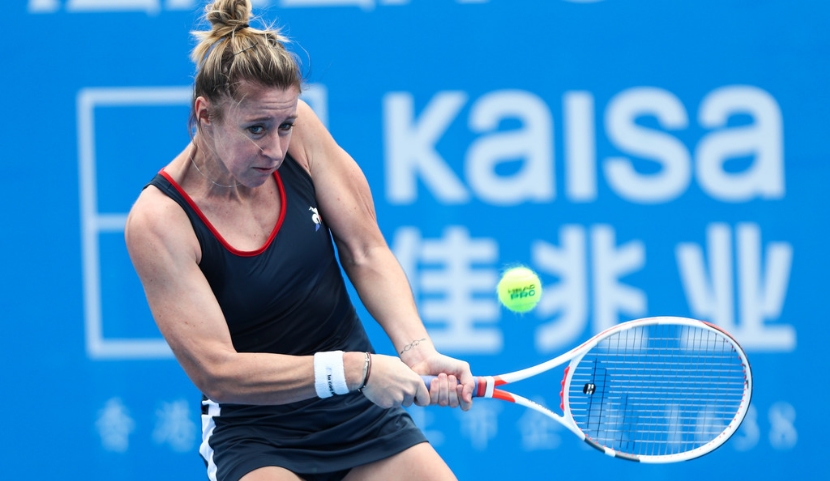
Wozniacki asked the trainer to come on the court and had a brief conversation with her. She pointed to her abdominal area and showed certain movements with her arm which made her feel pain. She then approached the chair umpire, told her she was retiring, and headed over to Parmentier to explain.
In a matter of two hours, the top two seeds, Kuznetsova and Wozniacki, were no longer in the tournament. Any hope that tournament organizers had of filling the already empty stands inside the otherwise impressive Center Court at Koza WOS probably evaporated away around that time.
Irina-Camelia Begu def. Donna Vekic
Begu did not particularly play a bad first set, but still felt helpless at times – see her chat with her coach at 2-5 down – as Vekic played an all-around solid set, overpowering her opponent for the most part. It is not easy to do against Begu who is a skilled player that possesses the ability to change the pace of the game during rallies. It’s just that she could rarely get her feet set to do so.
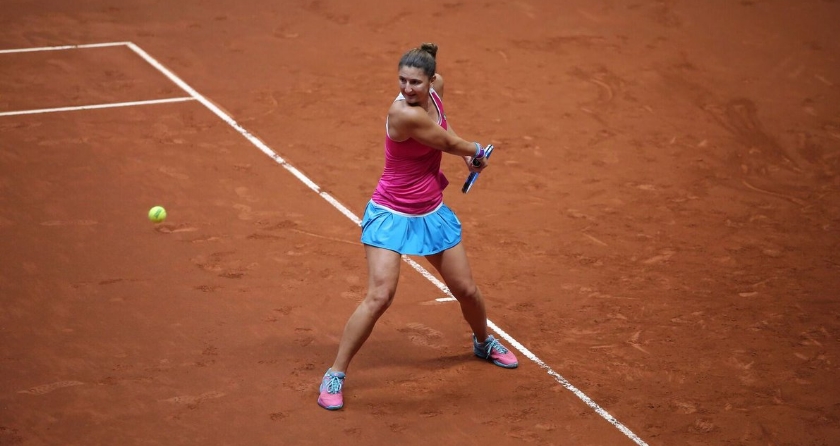
The same pattern more or less held through the first part of the second set. Vekic got the break to take a commanding lead at 6-3 3-1.
Two games later, down 2-4, Begu played two spectacular points in a row, finishing both with forehand errors to go up 0-30. She was patient and waited for the right opportunity to unleash her forehand. Vekic committed two backhand errors in the next three points and there was the break Begu desperately needed.
At 4-4 and Begu serving, Vekic had a golden chance to break at 30-40. She had an easy passing shot opportunity with Begu 5 meters in front of her at the net and she missed the backhand wide. She covered her head with her hands in disbelief. But she did not lose her nerves – at least, not at that point. She won the next two points, the second one on a remarkable forehand angle, and went up again to serve for the match at 5-4.
But for someone who kept her resolve so well in that particular sequence, the rest of the match turned into an utter disaster.
She double-faulted twice and made two unforced error to hand the break right back. But no worries, Begu did pretty much the same – minus one double fault – and Vekic found herself serving for the match again at 6-5. On match point at 40-30, she double-faulted! It all went downhill after that moment. Two point later, down a break point this time, she had a high sitter on top of the net that she could have easily guided to the open court for a winner. She smacked it right at where Begu was standing. The Romanian passed her.
Break, 6-6, tiebreaker!
It continued to go from bad to worse for Vekic. She threw in another double fault (her sixth of the set) at 1-1 in the tiebreaker and added five more unforced errors in succession to lose it 7-1. Just like that, a third set appeared on the horizon.
That horizon did not offer any light to Vekic.
No need to recount the final set in detail other than to say that it became agonizing to watch as she committed error after error, falling completely apart. Every tennis player goes through this type of downfall at some point(s) in their career. It never gets any easier though, neither for the player, nor for her team. She did calm down a bit later in the final set and tried to climb back in the match but, by then, Begu had built a substantial lead and was not planning on looking back.
Begu won the match 3-6 7-6 6-1, a little over half an hour after she had faced a match point against her. She will take on Pauline Parmentier in the semifinals on Saturday.

